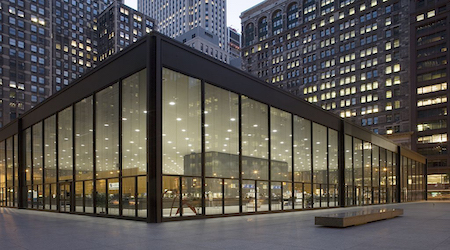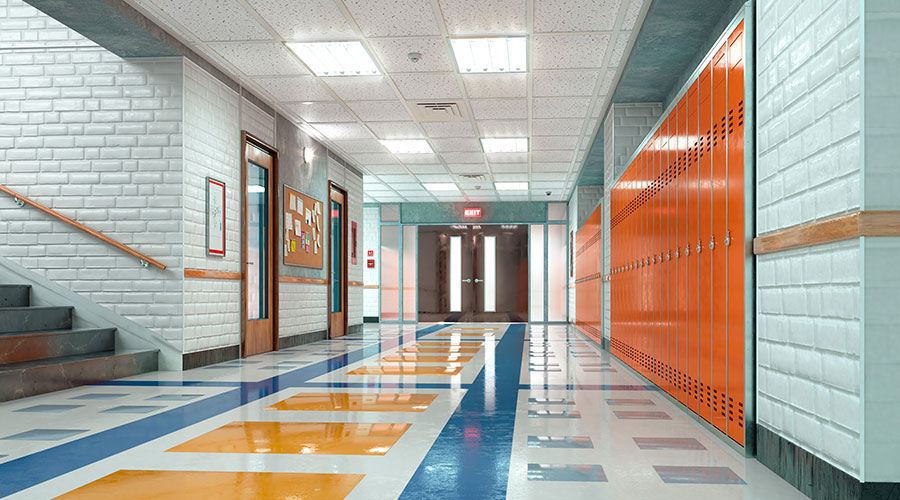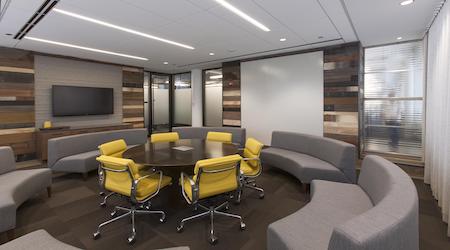4 Crucial Lighting Design Considerations for a Post-COVID World
Here is how next-wave lighting design will enable and impact tomorrow’s offices.
When we think about offices of the future, a realm of images come to mind: Computer screens projected whenever and wherever we want them. Spaces that can be instantly reconfigured to accommodate one person working alone or many collaborators. Seating that can automatically adjust to fight fatigue. It’s possible we’ll see all of those things and more. But one often-overlooked, crucially important element of every workplace is poised to have more impact on our future workspaces than any adjustable furniture or sci-fi computer monitor. That key element? Light.
Though light is an elemental necessity for daily life and work, it has often taken a backseat in the design of workspaces. On a sunny day in a modern building with large windows, you might never think about office lighting at all. But shift your seat further into the interior of that building, or factor in smaller windows and a longer work day, and lighting’s importance leaps to the fore.
Office lighting can often be an afterthought for workplace designers, but careful integration of lighting into the design from its inception can result in a lighting design that not only supports productivity and workplace health but creates additional functionality for space, enables advanced wayfinding, and even functions as a brilliant, adaptable (and cost-efficient) medium to reinforce corporate identity and branding.
In the offices of decades past, lighting was often accomplished with rows of hanging fluorescent fixtures with controls that offered two settings: all on, in their buzzing, glaring glory, or all off. Modern lighting design has been transformed by LED technology and advanced controls, which allow for features such as dimming per today’s energy code requirements. Today’s common open ceiling office construction, which saves ceiling construction costs, also has several impacts on lighting design. This must be accomplished with fully finished fixtures that look good from every angle, and are adapted to carefully illuminate workspaces without highlighting mechanicals on view in the ceiling above. Lighting has even become a part of the office branding and decor, with fixtures that double as art installations or dramatic visual focal points in central gathering places and at entry points.

While the widespread shutdowns that have accompanied the current pandemic have changed our thinking about what offices should be and will be in the post-pandemic future, throwing widespread uncertainty over the design of offices, several overarching areas of focus have emerged — and each is impacted by lighting.
1. Versatility
Future workspaces will need to respond to the desire for greater flexibility to change the space or reconfigure on the fly to accommodate different work styles or needs, or respond to something like the coronavirus pandemic. With new lighting technologies, advanced controls allow reconfiguration of a system via software — eliminating the need for rewiring when a workspace needs to change or serve a new function. In some cases, these systems allow for control from a remote location — even from home — and can be used to shut down parts of the system that are not in use, or set to maximize power savings, reducing cost for building operators. Advanced technology will also streamline troubleshooting in lighting systems, flagging a failing fixture, for instance, and allowing maintenance crews to respond before a repair ticket is even created by users in the space.
2. Individual Choice
Building in the ability to allow individuals to control their own working environment will take on greater importance in offices of the future, becoming a key amenity and allowing companies to become more inclusive. These changes will not only allow end users to follow their preferences, they can allow disabled or neurodivergent people to customize their environments in ways that allow them to achieve greater success and participation in the workplace.
Lighting has a key role to play, with advancements in fixtures and controls that allow seamless control by end users from a workstation, phone, or even a mobile device. Workers will be able to control color tuning and dimming, setting an individual quality of light which can then follow them if they are assigned a new space, simply by shifting their settings to the new area.
Obviously, best practices for these systems will include some limits on end user control, but the ability to create settings that conform to individual workspaces is nearly limitless.
3. Health and Wellness
Health and wellness are concerns that have taken on new urgency during the pandemic — and are likely to remain top of mind in every arena moving forward, including in our office spaces. One aspect of creating a truly healthy office is creating the appropriate quality of light.
As mammals, our bodies want connection to daylight. We need to experience the daily rhythm of morning, noon, night, and a physical connection to light helps to foster good health. Yet, in a workplace we can’t all be next to a window. Advanced lighting systems allow for white tuning that mimics daylight and can be calibrated to each location based on distance from actual sunlight. This has been shown to maintain worker productivity and health, and is a simple way to invest in the well-being of the workforce as employers look to create a quality environment for their employees. Digital lighting protocols make it easy to set up and maintain, which means we will see increased attention to this detail in future offices.
4. Safety
Enhanced safety in the workplace will continue to be a concern moving forward, and lighting offers several advanced security capabilities within the workplace. Fixtures with built-in sensors can track the movement of people and portable equipment as well as space use, providing an added layer of security and safety. Lighting can also be used to enhance wayfinding techniques, and to encourage specific traffic patterns which can help create social distancing. Sensors also can create cost savings: Studies have also shown that when there is a sensor per fixture, users are less likely to override them, saving more energy. With a careful eye to the overall lighting design, these sensors can be implemented without affecting the quality of light within a space.
As we look to the next chapter in the life of our workspaces, change is inevitable and optimism about what those future offices can be seems well-founded. Creating a healthier, more inclusive and smarter workplace has never been easier — and lighting design has a big role to play in pointing the way.
Avraham Mor is founder of Morlights, a Chicago-based lighting design firm.
Related Topics:













